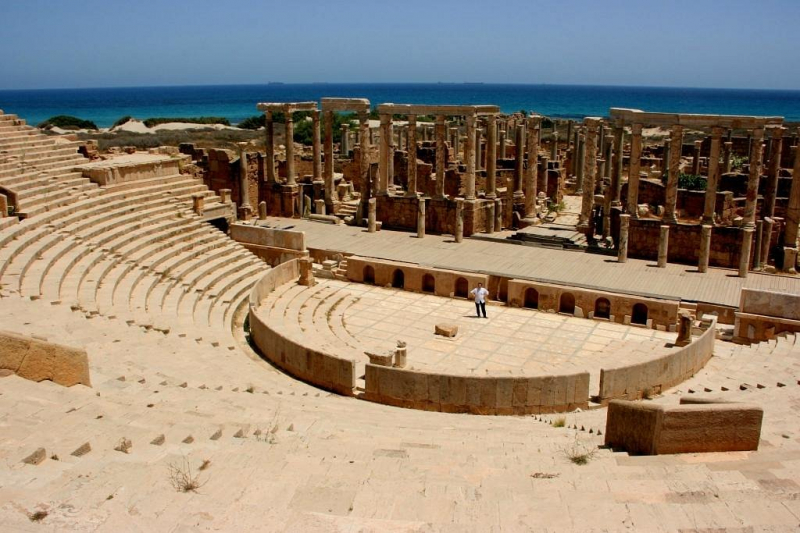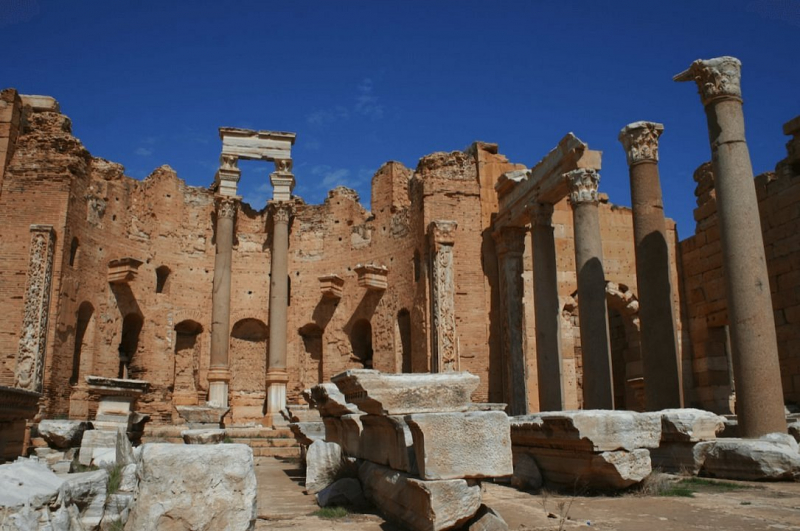Leptis Magna
Leptis Magna (Lepcis Magna) is a remarkable archaeological site in Tripoli, Libya. Leptis Magna was founded by the Phoenicians in the first millennium BC and later became part of the Carthaginian Empire before being integrated into the Roman Empire in 46 BC.
The natural port at the mouth of the Wadi Labdah aided the city's development as a major commerce center. It also served as a market for agricultural products produced in the lush coastland region. It went to Masinissa's Numidian kingdom in 202 BC, near the end of the Second Punic War, from which it broke away in 111 BC to become an ally of Rome.
Septimus Severus, who became Emperor of Rome in 193 AD, was born in Leptis Magna and thus became its patron. He invested substantially in improving his hometown, converting it into one of Africa's most important Roman cities. The majority of the existing structures at the site are Roman and date from Septimius Severus' era.
However, Leptis began to collapse in the following centuries as a result of increased border insecurity, culminating in a disastrous incursion in 363, and the Roman Empire's mounting economic woes. Leptis's prominence as an urban center effectively ended after the Arab conquest of 642, and it fell into ruin.
The ruins of Leptis Magna were pillaged throughout history, but they were mostly buried by sand. Excavations started in the 1920s. The Libyan Antiquities Service, as well as groups of Italian archaeologists, began working to conserve and investigate the site at that time.
Among the various ruins discovered in Severus' hometown, the marketplace, Severan Basilica, Forum, Amphitheatre, and Severan Arch are among the best-preserved Roman sites in the Mediterranean.
Despite the repeated invasions that plagued Leptis Magna from the fourth century onward, it was finally conquered by the Hilalians in the eleventh century. Leptis Magna is now a UNESCO World Heritage site. Today Leptis Magna is regarded as one of the most beautiful historical sites in Libya.







